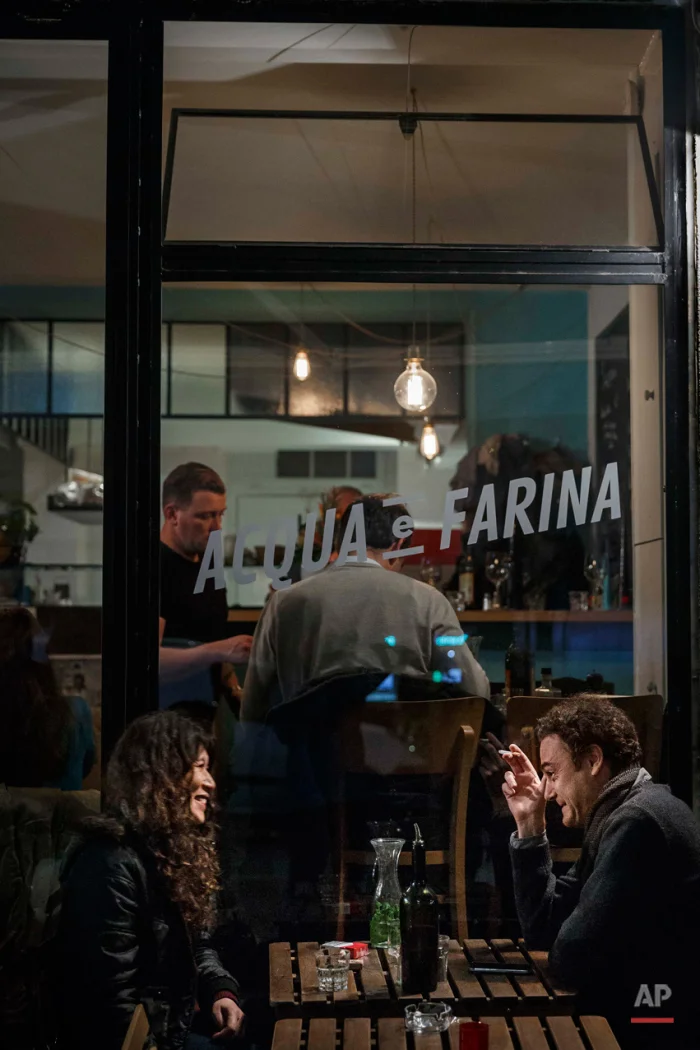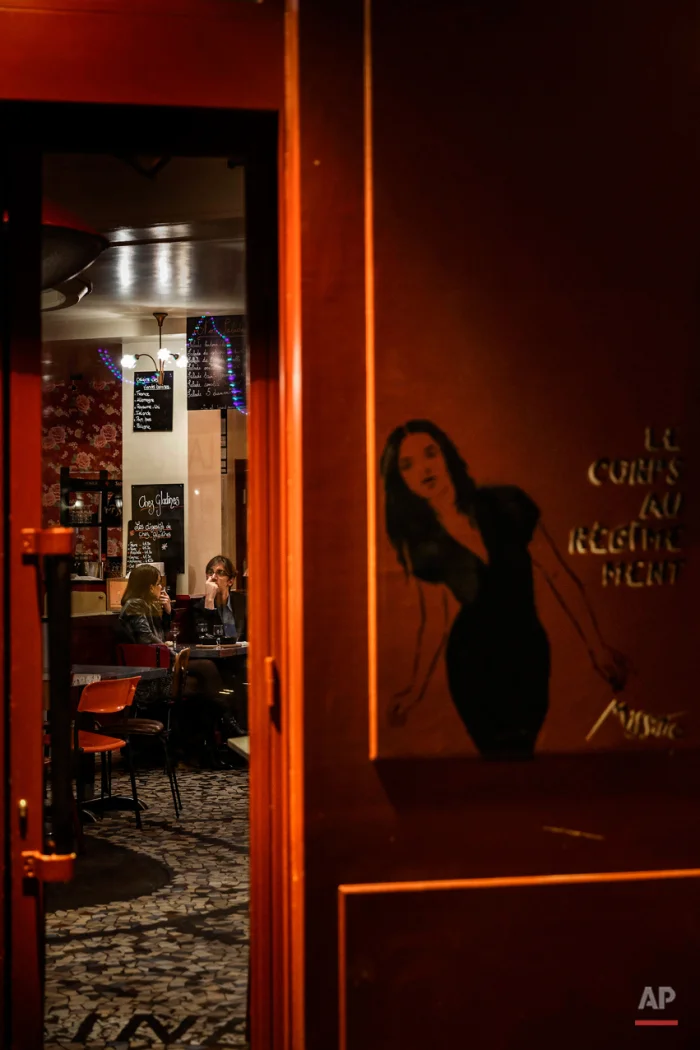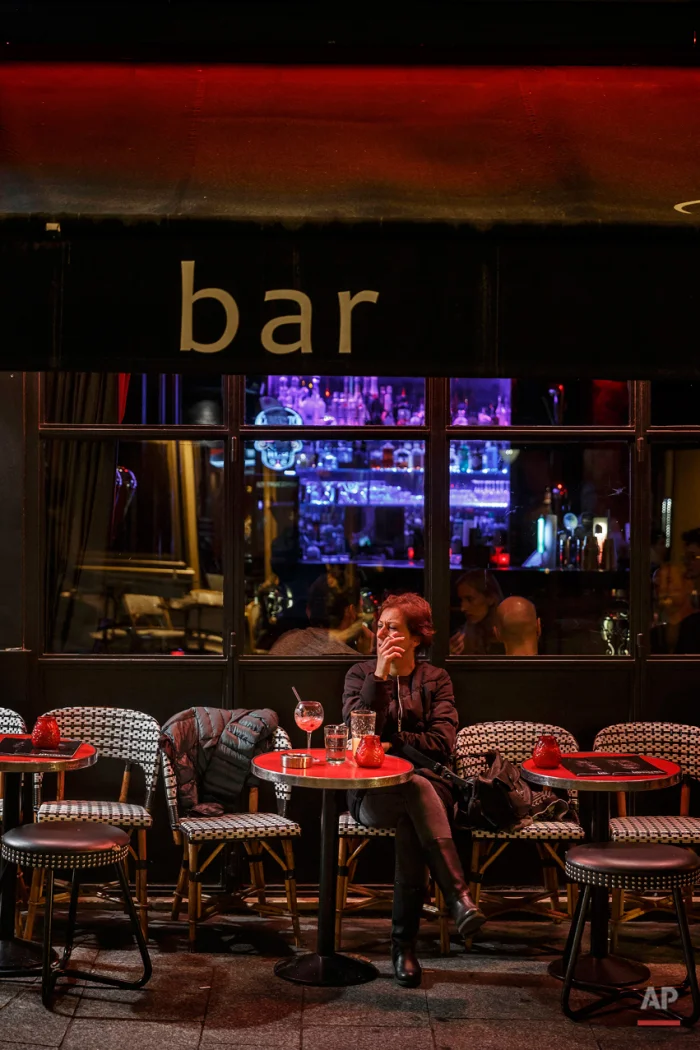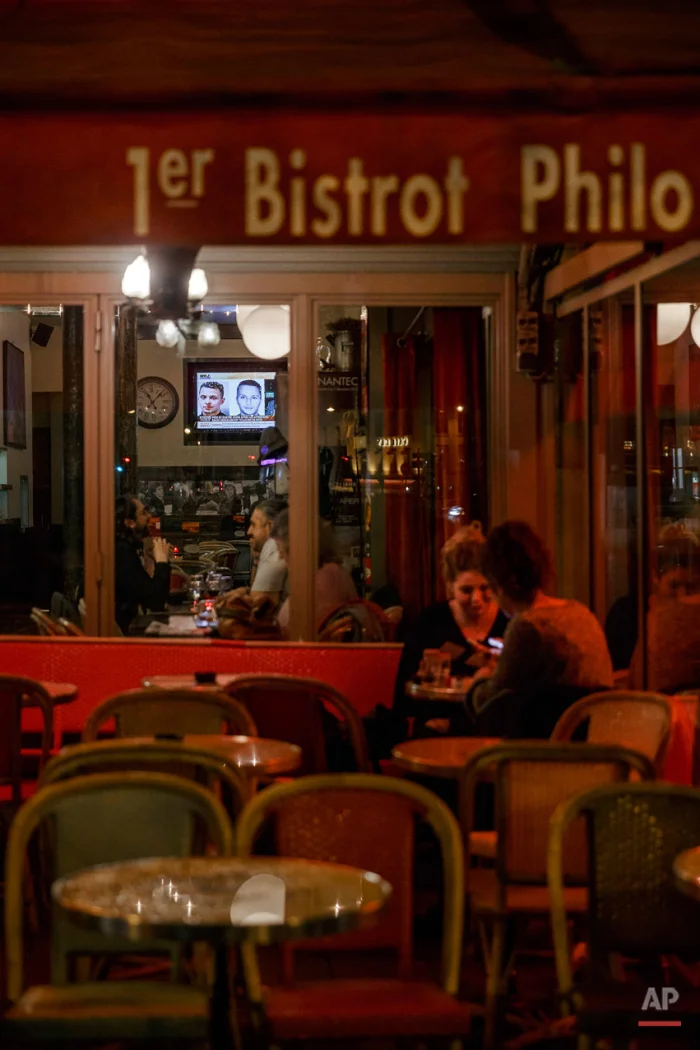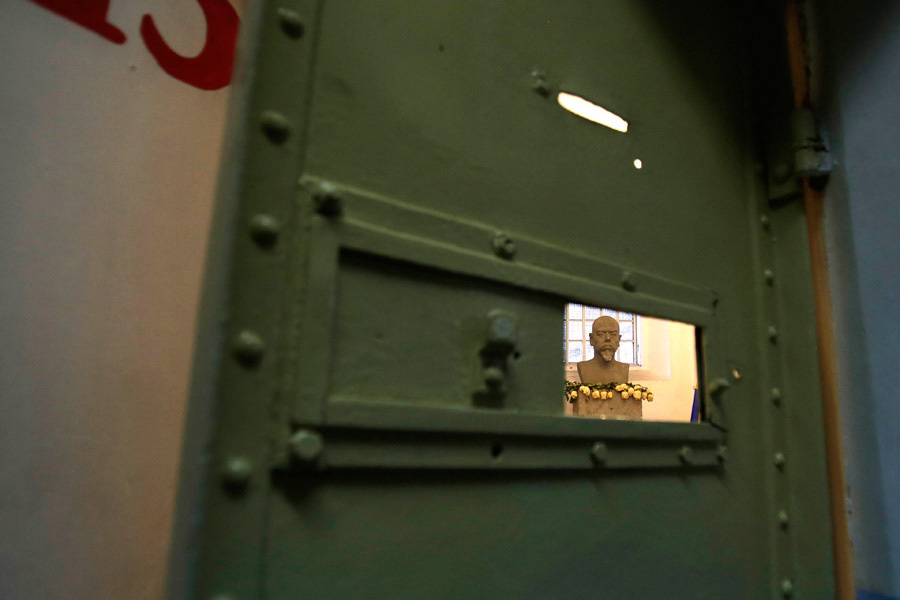After attacks, many Parisians embrace food, wine and friends

In France, a glass of wine is many things: one of life's small pleasures, a civilized complement to food, a source of national pride. Now, it's also a symbol of defiance.
As vintners release this year's batch of Beaujolais Nouveau in the shadow of last week's Paris attacks, "To the bistro!" has replaced "To the barricades!" as France's rallying cry.
"What would our country be without its cafes?" asked President Francois Hollande, telling his compatriots that life must be "resumed in full" after the Nov. 13 gun and bomb rampage by jihadi militants.
The attacks, which killed 129 people and injured more than 350, have left France in shock. They overshadowed Thursday's Beaujolais Nouveau Day, when winemakers uncork their latest batch of the fruity young wine, and bars and restaurants hold special tasting sessions.
Jean Bourjade of the wine producers' body Inter Beaujolais said the group considered scrapping some of the promotional events after the attacks. But it was decided that the wine should flow, because "it is the French culture, it is the French way of life, which has been put in jeopardy."
Many Parisians are determined to raise a glass — even those who consider Beaujolais Nouveau's popularity a product of savvy marketing rather than quality.
"The Beaujolais isn't good wine. But everyone will go out on purpose tonight," said 63-year-old Lucienne Tavera, sitting with two friends on a cafe terrace near the Bataclan concert hall, where the deadliest of the attacks unfolded.
"Tonight, we won't care how it tastes."
Her resolve is echoed across the patch of eastern Paris where the attacks took place — the 11th arrondissement and the neighboring Canal Saint-Martin area in the 10th.
After 8 p.m., about 100 young people were out in the rain at the Place de la Republique, a central square in one of the neighborhoods and a home to several candlelit memorials to the victims. Cafés and restaurants in the area were about half full.
When the Islamic State group took responsibility for the attacks, it called Paris "the capital of prostitution and obscenity."
The militants did not hit the city's high-profile tourist attractions, gleaming buildings and neighborhoods of freshly washed streets. They chose an eclectic, slightly scruffy area where destination restaurants, hip bars, art galleries and designer boutiques sit alongside corner stores, kebab shops and bakeries.
It's also a place where a mosque, a church and a Jewish school occupy the same few blocks — a diversity that many residents treasure.
"There are Jews, Muslims, young people, old people in this neighborhood. It's a family," said 28-year-old Charlotte Pagnoux. "This is the heart of Paris, the soul of Paris. This is why they came here. They struck at the heart of Paris."
It's also an area — like parts of Brooklyn or east London — that first has grown edgy and then affluent.
The district's longstanding working-class residents have been joined over the decades by immigrants from North Africa, young creative types and — as social cachet and property prices rose — by well-off "bourgeois bohemians" or "bobos."
On that unusually warm November evening last week, gunmen rampaged through the area, firing automatic weapons at packed bars and cafes and storming the Bataclan concert hall during a performance by the U.S. band Eagles of Death Metal. Eighty-nine people died at the Bataclan, and 40 elsewhere.
By choosing this area, the attackers hit at the city's young and bohemian heart. The roll call of the dead shows that most victims were in their 20s and 30s, and many worked in the media and creative professions: as architects, artists, journalists, designers and musicians.
The Bataclan is a place that generations of Parisians have associated with fun. Built in the 19th century in an ebullient Chinese-influenced style, it has hosted musicians from Maurice Chevalier to Iron Maiden. It's also famous for its club nights, including long-established, lively gay parties on weekends.
"I have so many glittery memories on Saturday night — laughing with friends, dancing with drag queens," said Stephane Le Breton, a marketing consultant and Bataclan regular. "It's beyond comprehension that this is the same place in which this evil last Friday was unleashed.
"I feel like can never set my foot in there again. It's the end of an era."
Many others share the fear that things will never be the same.
On the weekend after the attacks, restaurant business plunged 80 percent, according to France's hotel and restaurant union. Tables filled up again through the week, as Parisians heeded the call to go out, popularized on social media with the slogan "Tous au bistrot" — "Everyone to the bistro!"
"This is what we do to make things go back to normal," said Frederic Hoffmann, who runs a creperie down the street from one of the stricken bars and had spent several hours shuttered inside amid the attacks. "We open the restaurant. We get people together, to try to talk and make some sense out of it."
For the past six days, people in the area have talked about little else. Normal life will resume, but locals worry that once the mounds of flowers, candles and tributes outside the attack sites are gone, the landscape of their neighborhood will have irrevocably changed.
Ismael Jole-Menebhi, a reggae singer who lost a friend in one of the cafe attacks, said the killers had targeted the area's diverse social mix.
But he vowed they wouldn't succeed in dividing residents.
"We want to love each other and we (want) to say it to each other," said Jole-Menebhi. "And we want to spend more time together. So on that goal, at least I can say that they failed."
Test from the AP news story, After attacks, many Parisians embrace food, wine and friends, by Jill Lawless.
View these photos on APImages.com
Spotlight is the blog of AP Images, the world’s largest collection of historical and contemporary photos. AP Images provides instant access to AP’s iconic photos and adds new content every minute of every day from every corner of the world, making it an essential source of photos and graphics for professional image buyers and commercial customers. Whether your needs are for editorial, commercial, or personal use, AP Images has the content and the expert sales team to fulfill your image requirements. Visit apimages.com to learn more.
Written content on this site is not created by the editorial department of AP, unless otherwise noted.
AP Images on Twitter | AP Images on Facebook | AP Images on Instagram
Visual artist and Journalist


